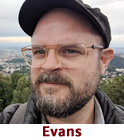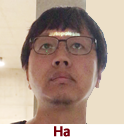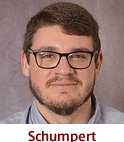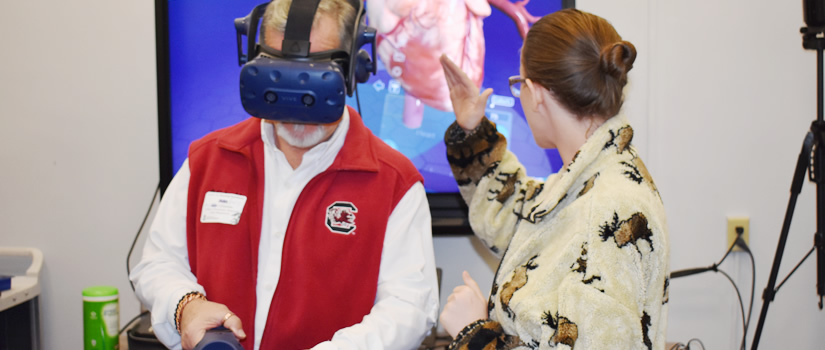The Center for Teaching Excellence awarded grants to three faculty for the revision or development of exemplary courses to integrate virtual environments technology (virtual reality, augmented reality, and/or 360o video). The goal of these grants is to invest in the continuous quality improvement of courses taught by faculty who provide students with exemplary, highly engaging courses, offered either in an online, blended, or traditional format—utilizing virtual technology.
Course descriptions are written by their respective awardees.
Chaz EvansAssistant Professor MART 590: New Media Documentary The goal of MART 590: New Media Documentary is to create a new context where the intertwining traditions of computational media and documentary filmmaking can be supported and advanced on the USC campus. Students will gain technical ability with 360° video (and other related digital tools), while placing it in a larger cultural context of documentary and new media projects and incentivizing them to be exhibited beyond the classroom environment. This course will integrate 360° video by equipping students with the tools necessary to resolve their own original 360° video projects. Students will be encouraged to think critically about what a spherical video frame can accomplish conceptually and artistically in comparison to standard 16:9 video. Students will have to consider questions about how traditions of moving image arts are extended or interrupted by the new production techniques of 360° video: how does one seek out and prepare a location for shooting in all directions? What are the elements of mise-en-scène (the arrangement of scenery and stage properties in a play) when expanded to a sphere? Students will also have to think critically about the display context of their work: will it playback in a web browser? Or a VR headset? How do these different points of interactivity affect the overall goals of their project? This course will improve student learning objectives by creating a new production pipeline for MART courses that students have not yet practically engaged with, while also creating continuity with other media art traditions. It creates the grounds of possibility for learning objectives that deal with 360° video, creates a path for documentary-interested students to grow their practice into new media, and creates a path for new media-interested students to engage with documentary. |
 |
Byeongwon HaAssistant Professor MART581E New Media Advanced: Sound Art Sound art encourages visitors to experience their space with specific sound resources in a creative way. MART581E New Media Advanced: Sound Art actively explores sound as the center of art. By blending diverse technologies and sound sources, the course provides students with an interdisciplinary environment to produce sound art in a creative way. The class experiments with emerging technology as a catalyst for an interdisciplinary art environment. From musique concrete to sound installation, students make creative sound projects. Based on diverse literature about experimental sound art and music, students develop their own philosophy on sound art. With specific sound resources, students redesign their everyday space as an interactive environment. Based on the sound art practice, MART581E culminates in a final project, an immersive soundscape with VR technology. This immersive VR soundscape project contributes to finding a harmonious balance between sound art and new technology. During the pandemic, students made virtual soundscape projects with the professional video game development tool, Unity Editor. They created 2D RPG soundscape projects, which allow visitors to experience a unique soundspace as an artistic video game. With the grant a VR development environment will be created. With Oculus Quest 2, students will develop the 2D soundscape project into an immersive 3D soundscape project. At the beginning of the course, students will experience immersive VR soundscape projects from the previous semester. By reviewing the previous projects, students will be able to not only get a concrete idea about their VR projects earlier but also design their own VR projects in a sustainable environment. Based on the concepts from the individual 2D soundscape projects, students will organize into five groups and design 3D virtual soundscape projects which provide users with a new method to understand a town, a city, and a country with specific sound resources. Even though MART581E students have basic skills to make a video game, they might have a hard time dealing with the software to make the immersive VR environment. For this reason, a template will be developed for student groups just as was done for the 2D soundscape projects. This will help students save time and focus on designing artistic soundscape projects. By setting up the VR environment with the template, students will be able to practice the technology with fewer trials & errors and focus on designing soundscape itself. Sound art can be regarded as a less practical art form to seek a job after graduation. However, these VR learning outcomes will help not only practice the new technology but also seek a new media job or pursue a new media artist career after graduation. Learning virtual reality technology will contribute to enhancing student’s new media art/design skills for their future careers. |
 |
Charles Andy SchumpertInstructional Faculty BIOL 302L: Cellular and Molecular Biology Lab BIOL 302L: Cellular and Molecular Biology Laboratory is an upper-level lab in the Biological Sciences major curriculum. Most of the students are sophomores or juniors wo have career aspirations in the medical field. This lab is popular with students who are drawn to molecular biology, typically in the therapeutic point of view for pre-med purposes. On top of learning critical skills, they will use for the rest of their career, students also get a crucial experiential learning opportunity. Coming back into the physical lab Fall 2021, faculty noticed that students were struggling with some basic usage of several pieces of laboratory equipment (microscope, micropipette particularly). Proper use of the lab equipment is crucial for students to perform the experiments in an appropriate time and effectively learn the science behind the experiments and methods. With this grant, Schumpert’s team will implement a form of augmented reality using Snapchat Lenses that demonstrate structure and proper usage of the microscope, micropipette, and safety equipment. Snapchat is a common application used amongst students. Snapchat Lenses are 3D images that can be superimposed over the user’s camera image/video. The team will create lenses that allow students to view various lab equipment in their own space and at their own pace and time. The lens will include proper names and details about the equipment to allow students to be more comfortable in the lab (and allow for enhanced studying). Not only will this help the lab to be more equitable, but it will also be more engaging for students. While the first edition of the lenses will be for structural and functional purposes, the hope is to gamify the experience in future editions, leading to friendly competition, further helping engagement and building an inclusive, collaborative classroom. The overall projects goals are:
Although the course isn’t currently using augmented reality in lab, virtual environments have been successfully implemented in BIOL 302L by using 360-degree video with Oculus Quest 2 headsets. Students in labs often struggle to visualize the various components of the cells and the molecular processes happening behind the scenes. By implementing VR, students were better engaged, had better knowledge of the material covered in lab, and they wanted more virtual reality! Implementing an AR experience for students can help them become more engaged and help enhance student achievement and performance. By offering Snapchat lenses to students, Schumpert hopes to build a love for science that will go beyond a semester in lab (and with this product, students can show others in their community and communicate the wonderful world of science). |
 |
